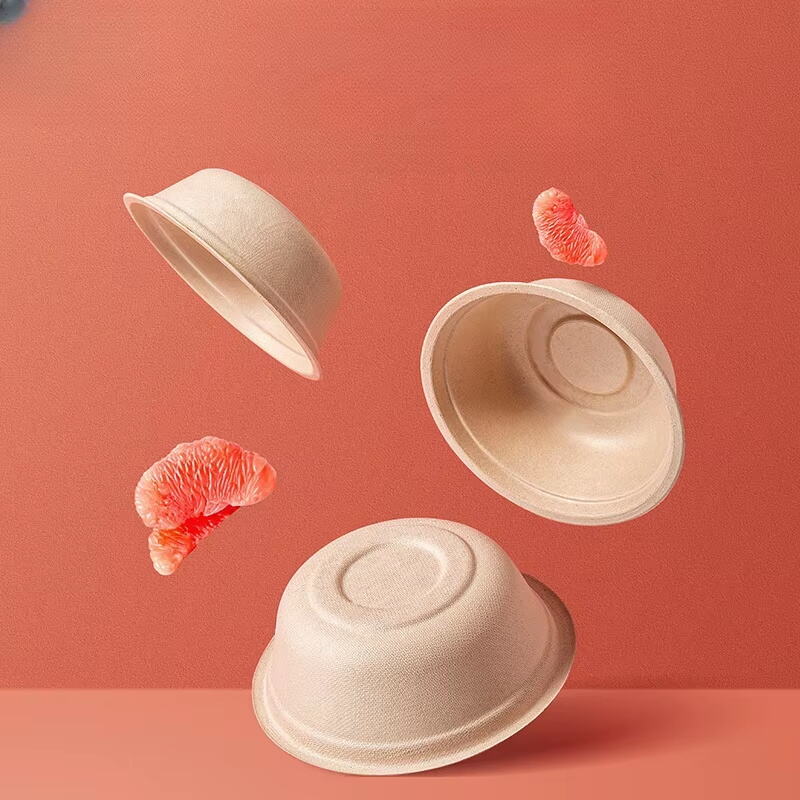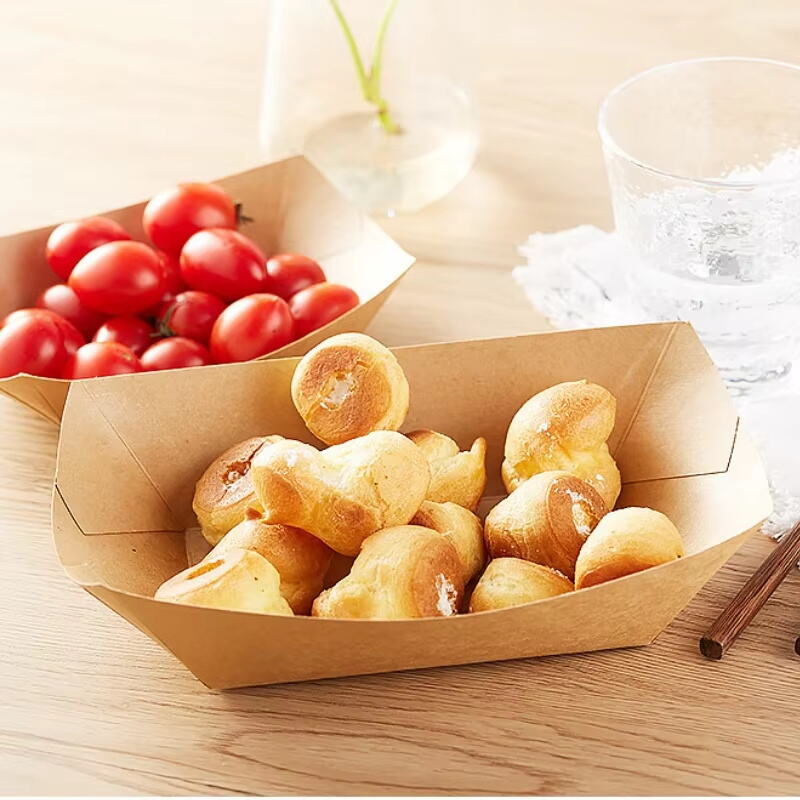The Rise of Sustainable Dining Solutions
As environmental consciousness grows globally, the food service industry is witnessing a remarkable shift toward sustainable dining solutions. Paper bowls have emerged as a frontrunner in eco-friendly dining alternatives, offering a perfect balance between convenience and environmental responsibility. These versatile containers are revolutionizing how we think about disposable dining ware, proving that sustainability doesn't have to compromise functionality.

Environmental Impact of Paper Bowls
Biodegradability and Waste Reduction
One of the most significant advantages of paper bowls lies in their biodegradable nature. Unlike traditional plastic containers that can take centuries to decompose, paper bowls naturally break down within weeks to months, depending on conditions. This rapid decomposition process significantly reduces the burden on landfills and helps minimize long-term environmental impact. When properly disposed of, paper bowls can be composted, returning valuable nutrients to the soil.
Sustainable Production Processes
Modern paper bowl manufacturing has evolved to embrace sustainable practices. Many manufacturers now use responsibly sourced materials, including recycled paper and materials from certified sustainable forests. The production process requires less energy compared to plastic manufacturing, resulting in a smaller carbon footprint. Additionally, innovative technologies have enabled the creation of paper bowls that maintain durability while using fewer raw materials.
Practical Advantages in Modern Dining
Versatility and Convenience
Paper bowls offer remarkable versatility across various dining scenarios. From casual picnics to formal events, these containers adapt to different serving needs. Their lightweight nature makes them ideal for takeout services, food delivery, and outdoor gatherings. Modern paper bowls come in various sizes and designs, accommodating everything from soups and salads to main courses and desserts.
Storage and Transportation Benefits
The practical benefits of paper bowls extend to storage and transportation efficiency. Their stackable design allows for compact storage, making them an excellent choice for businesses with limited space. The lightweight nature of paper bowls also reduces transportation costs and fuel consumption compared to heavier alternatives, contributing to a smaller environmental footprint in the distribution process.
Health and Safety Considerations
Food Safety Standards
Modern paper bowls are manufactured under strict food safety guidelines. The materials used are food-grade and free from harmful chemicals, ensuring safe food contact. Unlike some plastic containers that may leach chemicals when exposed to heat, quality paper bowls maintain their integrity and safety even when used with hot foods. This makes them an excellent choice for both cold and hot servings.
Hygiene and Single-Use Benefits
In an era where hygiene is paramount, paper bowls offer significant advantages as single-use containers. They eliminate the need for washing and the associated water consumption, while also preventing cross-contamination risks that can occur with reusable containers. This aspect has become particularly valuable in public health contexts and busy food service environments.
Cost-Effectiveness for Businesses
Economic Advantages
While the initial cost of paper bowls might seem higher than traditional plastic alternatives, their overall economic impact often proves more favorable. Businesses can benefit from reduced storage costs, lower shipping expenses, and elimination of washing-related utilities. The positive environmental image associated with using paper bowls can also attract environmentally conscious customers, potentially increasing revenue.
Marketing and Brand Image
Using paper bowls aligns with growing consumer demand for sustainable practices. Businesses can leverage this eco-friendly choice in their marketing strategies, enhancing their brand image and appealing to environmentally conscious consumers. Many paper bowls can be customized with branding elements, turning them into effective marketing tools while maintaining their environmental benefits.
Future Trends and Innovations
Technological Advancements
The paper bowl industry continues to innovate, with new technologies emerging to enhance performance and sustainability. Recent developments include improved water-resistance without harmful coatings, enhanced structural integrity, and even smart packaging features. These innovations are making paper bowls increasingly viable for a wider range of applications while maintaining their eco-friendly properties.
Market Growth and Adaptation
The market for paper bowls is experiencing significant growth as more businesses and consumers embrace sustainable alternatives. This expansion is driving further innovation and competition, leading to improved products and more accessible pricing. The industry is also adapting to specific market needs, developing specialized solutions for different food service segments.
Frequently Asked Questions
Are paper bowls truly better for the environment than plastic?
Paper bowls generally have a lower environmental impact than plastic alternatives due to their biodegradability and sustainable production processes. They decompose much faster than plastic and often require less energy to manufacture, making them a more eco-friendly choice.
How long do paper bowls take to decompose?
Under proper conditions, paper bowls typically decompose within 2-6 months, depending on factors such as moisture, temperature, and the specific composition of the bowl. This is significantly faster than plastic containers, which can take hundreds of years to break down.
Can paper bowls handle hot foods and liquids?
Modern paper bowls are designed to safely handle hot foods and liquids. Quality paper bowls are manufactured with heat-resistant properties and food-grade materials that maintain their structural integrity even when containing hot items, making them suitable for a wide range of serving temperatures.
